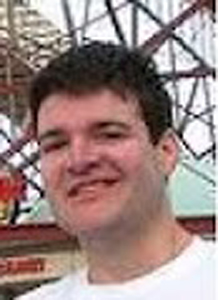Program Information
Tracking Tumor Response Over Treatment Course in IMRT and Proton Patients
R Williamson*, L Court, L Zhang, Z Liao, R Mohan, Y Chen, P Balter, UT MD Anderson Cancer Center, Houston, TX
SU-E-J-197 Sunday 3:00PM - 6:00PM Room: Exhibit HallPurpose:
To assess the changes in tumor mass and volume for NSCLC patients treated with either protons or IMRT.
Methods:
Analyses were done on the T50 phase from weekly 4DCTs of patients with stage 3 NSCCLC treated on an IRB approved trial comparing IMRT with passively scattered protons. Patients received either 74 GY or 66 Gy in 2 Gy fractions with concurrent chemotherapy. We performed deformable registration to segment the GTV on each CT. The deformable registration process was 1) rigid registration to determine the region of the GTV 2) deformation of the contours from the planning CT 3) thresholding to account for cavities formed inside the GTV. The resultant contours were used to determine volume and mass, as determined from the TPSs CT-to-density curve, change over course of treatment.
Results:
We analyzed 48 patients 30 were treated with IMRT and 18 with protons. The ratio of GTV volume and mass between the final week CT and planning CT were 0.80 ± .21 % and 0.77 ± 0.25% for IMRT and 0.71 ± 0.21% and 0.66 ± 0.24% for protons.
Conclusion:
We found that tumors shrank 20-30% when treated with concurrent chemo-radiotherapy at 2 Gy/fraction. In addition we noted that the remaining tumor, on average, had a lower density at the end of treatment. A difference was noted between protons and IMRT but was not statistically significant.
Funding Support, Disclosures, and Conflict of Interest: This work was, in part, funded by the National Cancer Institute
Contact Email:


